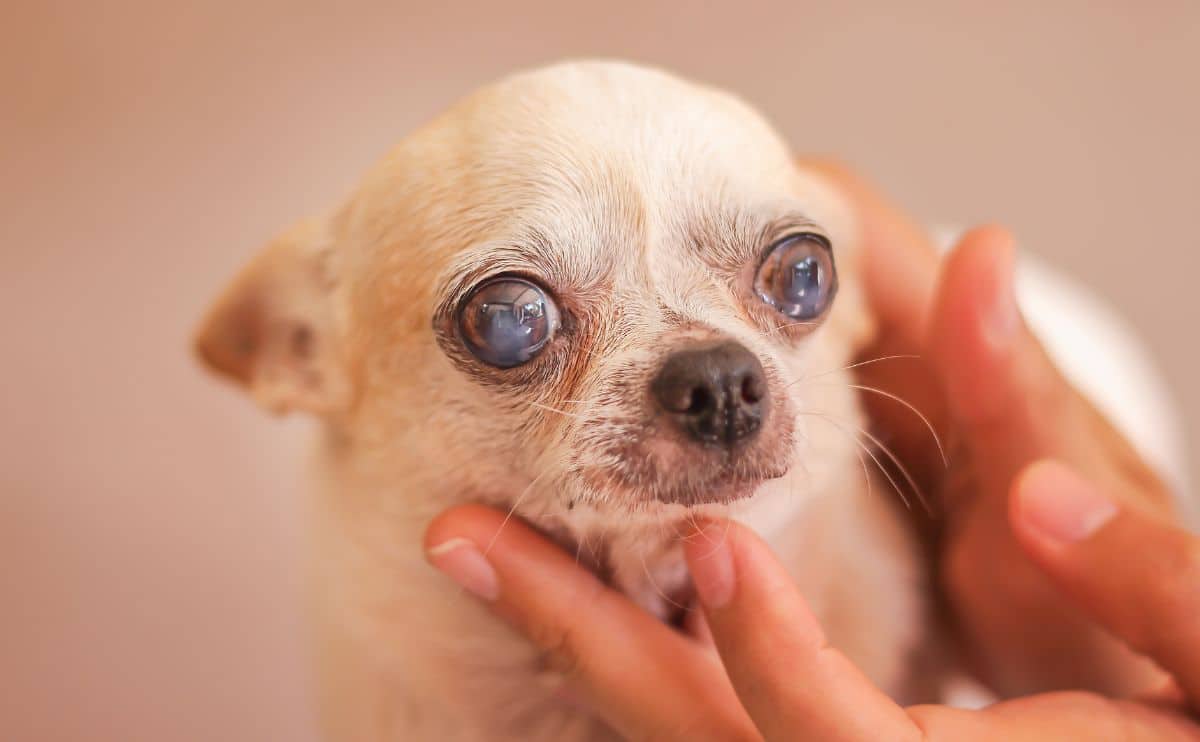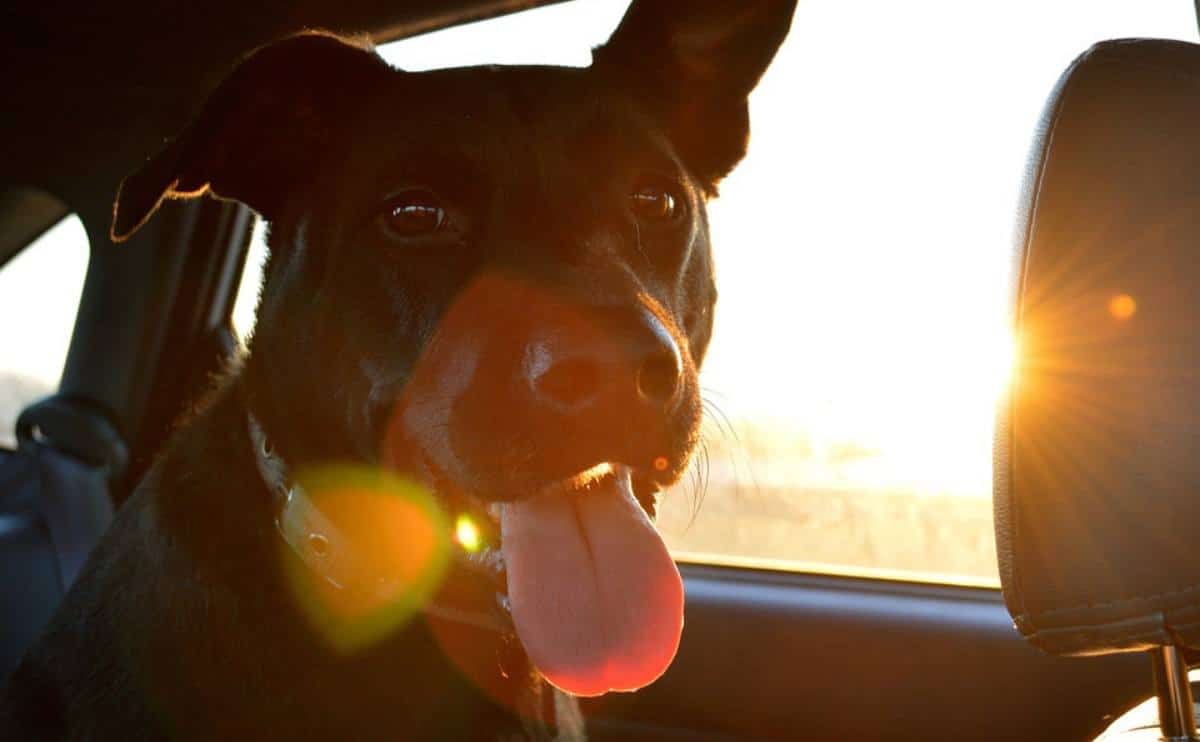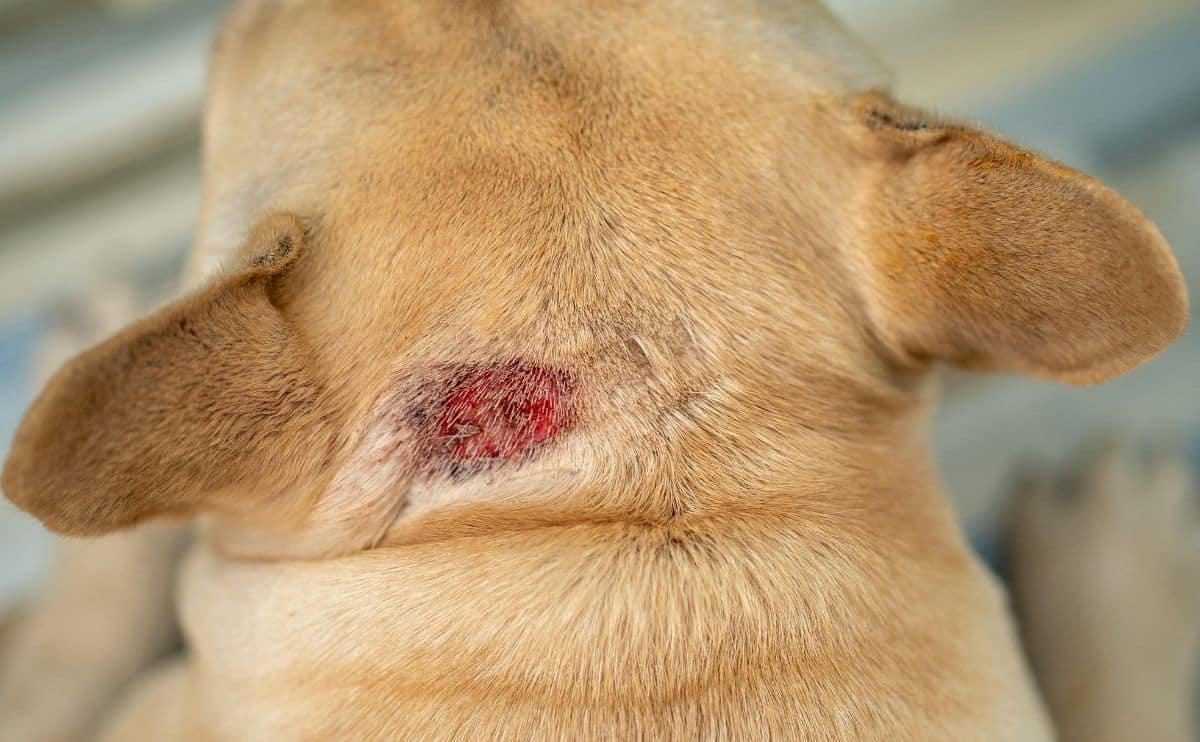Cataracts In Dogs: Symptoms, Treatment & Prevention
When you purchase through links on our site, we may earn a commission. Here’s how it works.

Did you know that it’s not just humans who can get cataracts? Dogs can too. Let’s find out more information about cataracts in dogs – what they are, why and how they affect dogs, and how they can be treated.
Table of Contents
What Are Dog Cataracts?
Dog cataracts refer to a change in the consistency and appearance of the lens within your eye. The lens is used to bend the light as it enters the eye to help it focus on the light receptors on the retinal surface (the back of the eye). When cataracts form, the lens becomes denser, more solid, and more opaque, meaning it’s not only less able to bend the light, but it also acts like a physical barrier, blocking light from entering the eye.
What Do Cataracts Look Like In Dogs?
If your dog has a cataract, you might notice that their eyes look cloudy or milky, with a white or gray tinge. If the cataract is relatively immature, it might be hard to spot it. However, as the cataract progresses, it will become more obvious. Aside from the cataract, your dog’s eye may look completely normal, but some complications of cataracts can cause the eye to be red, sore, and squinty, or it might appear to be bulging a little.
Early Signs Of Cataracts In Dogs
Aside from the eye appearing slightly cloudy or whiteish, you might expect that if your dog has cataracts, they’ll start bumping into things right away. However, early cataract development might not cause any noticeable signs at all.
As the cataract progresses, though, you might start to notice that your dog struggles in low light, especially at dusk and dawn. Their aim might not be so good when taking treats from your hand or catching a ball or toy, and, eventually, they may start to act less certain on stairs or in unfamiliar environments.
Dogs usually cope well with the gradual onset of vision loss caused by cataracts, though, especially in their home where they know the layout already.
Causes Of Dog Cataracts
Cataracts develop for a variety of reasons. Some dogs are genetically predisposed to developing cataracts, and certain breeds are more commonly affected. Equally, cataracts can develop as a consequence of diabetes, trauma to the eye, low calcium, or uveitis (inflammation of the iris).
Do cataracts in dogs’ eyes affect vision? The degree to which a dog cataract affects vision depends on the cataract stage. Here are the four dog cataracts stages:
- The first stage of cataract formation is known as the incipient stage. This is when the cataract is very small, involving less than fifteen percent of the lens. An incipient cataract does not interfere with vision.
- As the cataract progresses, it becomes immature. An immature cataract is larger than an incipient cataract but does not involve the entire lens. Vision is usually reduced, but dogs will still be able to see shadows or have some blurred vision.
- Next, the cataract reaches the mature stage. A mature cataract fills the entire lens, blocking all light from the retina and causing complete blindness.
- The final stage of a cataract is the hyper-mature phase. A hyper-mature cataract is when the lens and cataract shrink and shrivel a little. This will allow light through, and some vision is restored. However, the vision will be blurred because the lens does not focus the light as it should.
Causes Of Early Onset Cataracts In Dogs
Cataracts in dogs are often considered an older dog problem. However, many causes of cataracts can also affect young or middle-aged dogs. Causes of juvenile cataracts in dogs include hereditary conditions like progressive retinal atrophy, diabetes, and uveitis. Age-related cataracts in dogs tend to progress more slowly than juvenile cataracts, which can affect vision or cause inflammation much more quickly.
Are Cataracts Painful In Dogs?
Early cataracts usually aren’t painful in dogs. In fact, your dog might not even realize they have one. However, as the lens changes to form a cataract, it becomes more and more likely to cause uveitis or even glaucoma (high pressure within the eye). If your dog has a cataract and you’re unsure whether it’s bothering your dog, look out for signs of pain, including squinting, redness, or bulging. You might also notice your dog pawing at their eye or rubbing their face against things because they’re in pain.
Glaucoma vs Cataracts In Dogs
Both cataracts and glaucoma are conditions that can affect a dog’s eyes. However, they’re certainly not the same thing. Cataracts describe a change in the lens to become more cloudy, while glaucoma is an increase in pressure in the eye caused by reduced drainage of fluid from inside the eye. Although these conditions are separate, in some cases, cataracts can cause glaucoma.
Nuclear Sclerosis vs Cataracts In Dogs
As your pet ages, it’s quite common to notice a bluish or grayish tinge to their eye. This isn’t always cataract formation and may actually be nuclear sclerosis. Nuclear sclerosis refers to an old-age change within the eye, where the tissue becomes less translucent. Usually, this doesn’t affect vision, although it might cause mild blurriness. Your vet will be able to use a light source and scope to assess whether your dog has nuclear sclerosis or cataracts and can prescribe any medication or suggest monitoring as required.
Treatment Options
Incipient cataracts and mild immature cataracts don’t usually require treatment because they don’t affect vision much, and it’s rare for them to cause pain. However, once the cataract is causing severe vision disruption, or if your dog develops uveitis or glaucoma due to cataracts, there are various treatment options, including eye drops and surgery.
Eye Drops
If you think your dog could be developing cataracts, it’s really important to get them checked by a veterinarian. Increased pressure in the eye (glaucoma) can cause severe eye pain, and drops may be needed to reduce intraocular pressure. Inflammation of the iris (uveitis) is also a painful condition, and anti-inflammatory eye drops can be used to help. If medication fails to control the pain, or if the lens moves from its position in the eye, surgery to remove the eye (enucleation) might be needed to make your dog pain-free.
Cataract Surgery In Dogs
Specialist ophthalmologists can operate on your dog’s lens to remove the cataract. Speak to your veterinarian if you would like your dog to be referred to a specialist to discuss surgical options for dog cataracts. Learn more about cataract surgery costs for dogs.
Is There A Natural Treatment For Cataracts In Dogs?
There are no natural treatments for cataracts in dogs, and because your dog could be in pain, you must book an appointment with a veterinarian to find the best treatment option.
Does Pet Insurance Cover Cataracts?
Yes, pet insurance covers cataracts as long as no signs or symptoms appear until after policy enrollment and waiting periods have passed. Surgery and associated expenses average a cost range of $2,700 to $4,000, so having insurance could save you thousands of dollars in vet bills over the lifetime of your pet.
How To Prevent Cataracts In Dogs
Sadly, cataracts can’t be prevented. However, regular checkups with the vet will help to spot the signs early and could reduce the chances of complications or pain. Since many cataracts are inherited, it’s really important not to breed from dogs with juvenile cataracts and to consider screening tests for conditions like Progressive Retinal Atrophy.
Other Eye Issues In Dogs
No one wants their dog to lose their sight – dogs get so much enjoyment from toys, games, and an active life, and they often rely on their sight for these activities. While you can’t stop your dog from getting cataracts, you can take steps to make sure that any eye conditions are spotted and treated promptly. Learn more about other eye conditions in dogs, including eye cancer. You might also be curious to find out if dogs see color or not.



